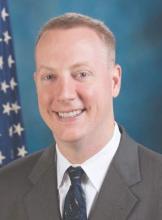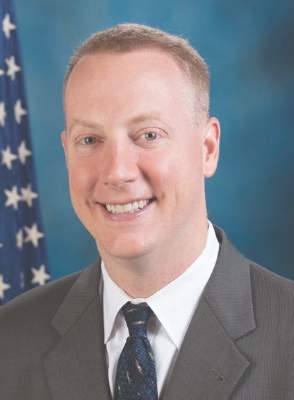User login
At least 30% of Medicare payments are now tied to quality, the Centers for Medicare & Medicaid Services announced March 3. Federal officials originally had aimed to achieve this milestone by the end of 2016.
“Thanks to tools provided by the Affordable Care Act, an estimated 30% of Medicare payments are now tied to alternative payment models such as accountable care organizations and bundled payments,” Dr. Patrick Conway, chief medical officer at CMS, said during a press conference.
Approximately $117 billion in Medicare payments in 2016 will be tied to these alternative payment models out of a projected $380 billion in total fee-for-service payments, Dr. Conway said.
Additionally, hospital readmissions were reduced by an estimated 565,000 between 2010 and 2015 and hospital-acquired conditions were reduced by 17% between 2010 and 2014.
Dr. Conway cited three factors for these improvements in health care quality.
First, he noted that there is broad buy-in to the notion that payment systems need to evolve to paying for quality over quantity.
“We see providers, states, communities, payers across this country moving to alternative payment models,” he said, adding that many in the public and private side are participating in the Health Care Payment Learning and Action Network, further demonstrating the drive toward value-based payments.
Second, “We’ve made adjustments to a number of our models and improved them,” he continued. “So with accountable care organizations, we continue to see increase in participation. We think this is because we continue to improve the model over time.” The same is true, he added, with bundled payment models.
And finally, he said “I think at the end of the day, people know this is the right thing to do. It’s the right thing to do for our patients. It’s the right thing to do for our health system.”
In response to a question as to whether the bar was set too low, considering that 20% of payments were tied to quality already when the goal was announced in January 2015, Dr. Conway said that even within the agency, some thought the 30% goal was too ambitious. No new goal for 2016 has been set.
CMS is now focused on part two of the goal: 50% of payments tied to quality by the end of 2018.
Two programs in the near term that will help achieve that are programs related to knee and hip replacement and oncology care.
At least 30% of Medicare payments are now tied to quality, the Centers for Medicare & Medicaid Services announced March 3. Federal officials originally had aimed to achieve this milestone by the end of 2016.
“Thanks to tools provided by the Affordable Care Act, an estimated 30% of Medicare payments are now tied to alternative payment models such as accountable care organizations and bundled payments,” Dr. Patrick Conway, chief medical officer at CMS, said during a press conference.
Approximately $117 billion in Medicare payments in 2016 will be tied to these alternative payment models out of a projected $380 billion in total fee-for-service payments, Dr. Conway said.
Additionally, hospital readmissions were reduced by an estimated 565,000 between 2010 and 2015 and hospital-acquired conditions were reduced by 17% between 2010 and 2014.
Dr. Conway cited three factors for these improvements in health care quality.
First, he noted that there is broad buy-in to the notion that payment systems need to evolve to paying for quality over quantity.
“We see providers, states, communities, payers across this country moving to alternative payment models,” he said, adding that many in the public and private side are participating in the Health Care Payment Learning and Action Network, further demonstrating the drive toward value-based payments.
Second, “We’ve made adjustments to a number of our models and improved them,” he continued. “So with accountable care organizations, we continue to see increase in participation. We think this is because we continue to improve the model over time.” The same is true, he added, with bundled payment models.
And finally, he said “I think at the end of the day, people know this is the right thing to do. It’s the right thing to do for our patients. It’s the right thing to do for our health system.”
In response to a question as to whether the bar was set too low, considering that 20% of payments were tied to quality already when the goal was announced in January 2015, Dr. Conway said that even within the agency, some thought the 30% goal was too ambitious. No new goal for 2016 has been set.
CMS is now focused on part two of the goal: 50% of payments tied to quality by the end of 2018.
Two programs in the near term that will help achieve that are programs related to knee and hip replacement and oncology care.
At least 30% of Medicare payments are now tied to quality, the Centers for Medicare & Medicaid Services announced March 3. Federal officials originally had aimed to achieve this milestone by the end of 2016.
“Thanks to tools provided by the Affordable Care Act, an estimated 30% of Medicare payments are now tied to alternative payment models such as accountable care organizations and bundled payments,” Dr. Patrick Conway, chief medical officer at CMS, said during a press conference.
Approximately $117 billion in Medicare payments in 2016 will be tied to these alternative payment models out of a projected $380 billion in total fee-for-service payments, Dr. Conway said.
Additionally, hospital readmissions were reduced by an estimated 565,000 between 2010 and 2015 and hospital-acquired conditions were reduced by 17% between 2010 and 2014.
Dr. Conway cited three factors for these improvements in health care quality.
First, he noted that there is broad buy-in to the notion that payment systems need to evolve to paying for quality over quantity.
“We see providers, states, communities, payers across this country moving to alternative payment models,” he said, adding that many in the public and private side are participating in the Health Care Payment Learning and Action Network, further demonstrating the drive toward value-based payments.
Second, “We’ve made adjustments to a number of our models and improved them,” he continued. “So with accountable care organizations, we continue to see increase in participation. We think this is because we continue to improve the model over time.” The same is true, he added, with bundled payment models.
And finally, he said “I think at the end of the day, people know this is the right thing to do. It’s the right thing to do for our patients. It’s the right thing to do for our health system.”
In response to a question as to whether the bar was set too low, considering that 20% of payments were tied to quality already when the goal was announced in January 2015, Dr. Conway said that even within the agency, some thought the 30% goal was too ambitious. No new goal for 2016 has been set.
CMS is now focused on part two of the goal: 50% of payments tied to quality by the end of 2018.
Two programs in the near term that will help achieve that are programs related to knee and hip replacement and oncology care.

